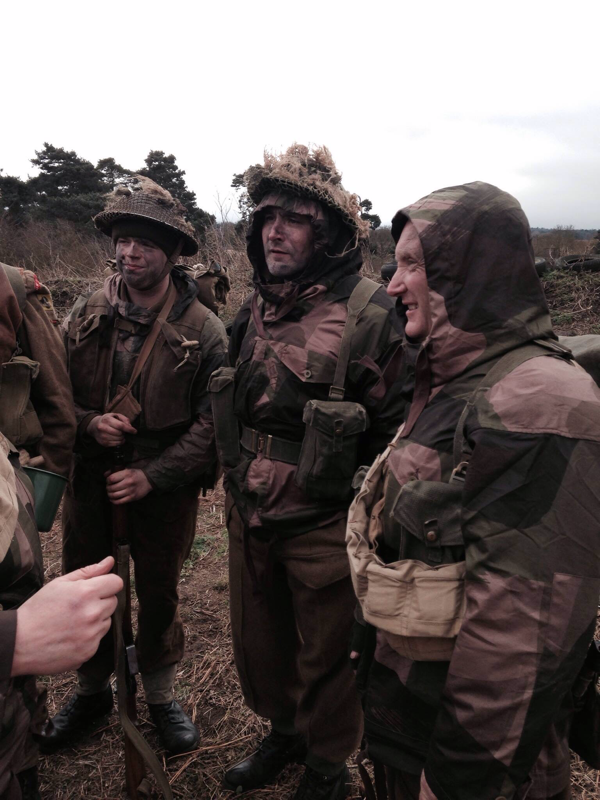

With the exception of Hayward, there's no recurring characters. Lasting only one season in the then standard 39 episode/half hour format, no two episodes are alike. Of course there's enough cigarette smoking done from various characters as well as occasional fist fights and gun play between Lanyard and villains for some added excitement. The episodes scripted are done in typical 1940s "film noir," style, with off-screen narration, occasional flashback sequences and surprise end twists.
#Lone wolf world war 2 movie#
Breaking away from his earlier baby-faced image from the 1930s, Hayward, now older with face slightly fuller, fits well into his role, caricatured somewhat to the liking of other movie tough guy heroes as Humphrey Bogart, Dick Powell or Alan Ladd. Unlike his predecessors, Hayward's Lanyard is low-keyed, soft-spoken tough guy.
#Lone wolf world war 2 tv#
Best known for his swashbucklers as THE MAN IN THE IRON MASK (1939) and THE SON OF MONTE CRISTO (1940), he was the original Simon Templar in THE SAINT IN NEW YORK (RKO, 1938), a role he reprized in THE SAINT'S GIRL Friday (RKO, 1954) before breaking into this TV role. Louis Hayward is no stranger to playing sleuths.
#Lone wolf world war 2 series#
It also did away with Lanyard's manservant, Jamison, as portrayed for laughs and good will assistance in the 1940s series by Eric Blore, and Alan Mowbray in the final theatrical installment. It overlooked the fact that he had a daughter (as depicted in 1929s THE LONE WOLF'S DAUGHTER with Lytell, and 1939s THE LONE WOLF SPY HUNT with William). "The Lone Wolf" eliminated Lanyard's origins as a thief. As with many television adaptations taken on previous motion pictures ("Perry Mason," "The Saint,"), many changes and updates were made. Before shifting to television, "The Lone Wolf" adventures were presented on the radio. Columbia brought back the series again starting in 1946 for a few more theatrical releases, with contract players Gerald Mohr and Ron Rondell assuming the role before the series came to an end in 1949.

Francis Lederer assumed the role in THE LONE WOLF IN Paris (1938) before developing into a whole new series format of mystery-comedies starring Warren William from 1939 to 1943.

Fox Films produced one Lone Wolf adventure in 1932 before Columbia revised the character again in THE LONE WOLF RETURNS (1935) with Melvyn Douglas. This was followed by subsequent features for Columbia starring its originator, Bert Lytell, continuing through the sound era of 1930. Before the character was converted to detective, Lanyard's humble beginnings was that as a gentleman jewel thief usually helping ladies in distress, a cross between "Boston Blackie" and "Raffles." Other actors enacted the role in follow-up films during the silent era before Lanyard returned to the screen again as THE LONE WOLF (1926) featuring Jack Holt. Created by Louis Joseph Vance in 1914, its success lead to a series of novels before being introduced to the screen with Bert Lytell as THE LONE WOLF (1917). The origin of "The Lone Wolf" has a long history. Like the Lone Ranger with his silver bullet, Lanyard's calling card is his emblem, a metal piece in the shape of a wolf. One episode could find him in New York City or another in Europe, solving a crime, murder or even faced head on with the crime boss or unknown assailant. Lanyard usually travels around the world to do his detecting, most of the time being on call from a close friend in need of his service. He has no office nor secretary he could call his own. Green, Bernard Girard, Seymour Friedman and Rodney Amateau, stars veteran screen actor Louis Hayward as Michael Lanyard, a individual who works alone. THE LONE WOLF (1955), a Gross-Naser Production, direction of various episodes by Alfred E.


 0 kommentar(er)
0 kommentar(er)
